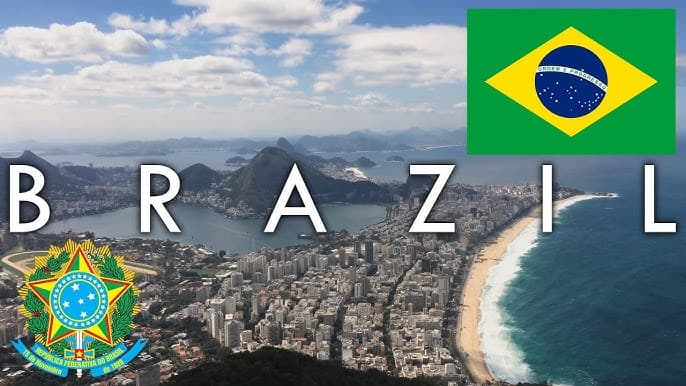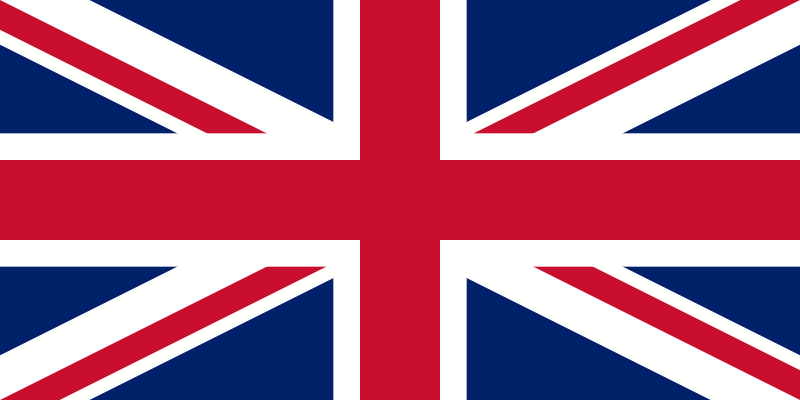
Monetizing YouTube in Brazil: Opportunities and Challenges
summary
Monetizing a YouTube channel in Brazil is an increasingly viable endeavor within the nation's dynamic digital and economic landscapes. As the Brazilian economy experiences growth, notably with a projected 3.0% increase in real GDP in 2023 driven by agricultural success and resilient household consumption, opportunities for content creators on platforms like YouTube continue to expand.[1] The creator economy in Brazil has seen a significant 30% rise in job creation, underscoring the importance of digital platforms in fostering new economic activities and audience engagement.[2] However, content creators must navigate the challenges posed by evolving global trade dynamics and domestic fiscal policies, including potential government regulations on internet platforms that earn revenue through user-generated content.[3][4]
The history of YouTube monetization in Brazil is intertwined with the country's regulatory framework, such as the Marco Civil da Internet, which has shaped internet governance since 2014.[5] YouTube's introduction as a monetization platform in Brazil has aligned with global practices, primarily through the YouTube Partner Program, which Brazilian content creators must join to earn revenue from advertisements.[6][7] This framework reflects a synergy between global platform policies and Brazil's local internet regulations, creating a fertile environment for content creators to generate income while complying with both national and international standards.
To monetize their YouTube channels in Brazil, creators must adhere to specific eligibility criteria under the YouTube Partner Program, which have been adjusted to lower barriers for entry. As of 2023, these requirements include having at least 500 subscribers and 3,000 watch hours over the past year, among others, making it more accessible for emerging creators to tap into YouTube's monetization opportunities.[8][9] Alongside traditional ad revenue, creators can explore alternative strategies such as channel memberships, merchandise sales, and viewer donations through features like Super Chat and Super Thanks.[10][11]
Navigating the legal and financial landscape is crucial for Brazilian YouTubers, given the influence of national laws like the Brazilian Internet Bill of Rights and the General Personal Data Protection Law (LGPD), which outline internet usage rights and data protection guidelines.[12][13] While these regulations provide a protective framework for content creators, they also pose challenges due to inconsistencies in enforcement and evolving legal interpretations. Therefore, understanding these regulatory dimensions is essential for creators aiming to successfully monetize their YouTube channels in Brazil while safeguarding their content and data rights.
Economic Context
The economic landscape in Brazil presents both opportunities and challenges for those looking to monetize their YouTube channels. The country has experienced a notable growth in economic activity, with real GDP projected to grow by 3.0% in 2023, driven by an exceptional agriculture harvest and resilient household consumption[1]. This positive economic outlook can enhance consumer spending power, thereby potentially increasing the audience size and engagement for digital content creators.
In the context of the Creator Economy, Brazil has witnessed a 30% increase in jobs generated by this sector over the past year, highlighting its growing significance[2]. This expansion underscores the increasing role of digital platforms, like YouTube, in shaping economic activity through content creation and audience engagement.
However, Brazil also faces economic headwinds, such as the potential impacts of changing global trade dynamics and domestic fiscal policies. Despite these challenges, the country's central bank has begun to cut interest rates, a move that might stimulate economic growth further and indirectly benefit content creators through enhanced consumer spending[3].
Moreover, the Brazilian government's consideration of regulating internet platforms that earn revenue through content could influence monetization strategies for YouTube creators[4]. As the digital landscape evolves, understanding these economic factors becomes crucial for content creators aiming to optimize their revenue streams in Brazil.
History
The concept of monetizing YouTube channels in Brazil is intrinsically linked to broader digital regulations and the growth of digital content creation within the country. In 2014, Brazil passed the Marco Civil da Internet, also known as the Brazilian Internet Bill of Rights, which set a precedent for internet governance by codifying principles such as network neutrality, freedom of expression, and privacy[5]. This legislation not only provided a framework for internet usage and users' rights but also influenced how digital platforms like YouTube operate within the Brazilian market[6].
As YouTube became an increasingly popular platform for content creators in Brazil, the focus on monetization through advertising became central. Creators primarily earn revenue from advertisements shown on their videos, aligning with YouTube's global monetization model[7]. To monetize their content, Brazilian YouTubers must join the YouTube Partner Program, which requires adherence to specific monetization policies established by YouTube[8].
Over the years, YouTube has updated its policies to ensure compliance with both global standards and local regulations. For instance, as of 2023, all YouTube partners, including those in Brazil, were required to review and accept new terms to continue participating in the YouTube Partner Program. Failure to accept these terms by the stipulated deadline would result in the termination of the monetization agreement[9].
Thus, the history of YouTube monetization in Brazil reflects a dynamic interplay between evolving local internet regulations and the global policies of digital platforms. This environment has allowed Brazilian content creators to leverage YouTube as a viable source of income while navigating both local and international legal landscapes.
Requirements for Monetization
To begin monetizing a YouTube channel in Brazil, creators must meet specific eligibility criteria set by the YouTube Partner Program (YPP). As of 2023, these requirements include having at least 500 subscribers and achieving 3,000 watch hours over the past year, alongside making three valid public uploads within the last 90 days[10][11]. These thresholds represent a significant reduction from previous requirements, reflecting YouTube's efforts to attract more content creators to its platform by lowering the barriers to entry[11].
Moreover, creators must reside in a monetized market to join the YPP, as advertisers can only target their ads to specific countries, including Brazil[12]. The application process for the YPP involves reading and agreeing to the Partner Program terms through YouTube's Creator Studio, providing a structured pathway for aspiring content creators to start monetizing their content[13][14][15].
Monetization Strategies
Monetizing a YouTube channel in Brazil involves a variety of strategies that creators can adopt to generate revenue. With the increasing popularity of content creators, new monetization methods have emerged alongside traditional advertising[16]. The YouTube Partner Program (YPP) is one of the primary avenues for monetization. To qualify, creators must meet specific criteria, including achieving 1,000 subscribers and 4,000 hours of watch time within the last 12 months, or alternatively, 10 million authentic public Shorts views[17][18]. Once accepted into the YPP, creators can earn through ad revenue, channel memberships, and YouTube's ad-sharing program[17][18].
In addition to the YPP, YouTube has introduced various monetization features. These include Channel Memberships, where fans can subscribe for exclusive content, and the Merch Shelf, allowing creators to sell merchandise directly under their videos[19]. Super Chat and Super Stickers enable viewers to make donations during live streams, while the Super Thanks feature extends this capability to regular videos[20][21]. These features not only enhance viewer engagement but also provide additional income streams for creators.
Furthermore, creators can explore off-platform monetization opportunities. This includes promoting their own products or affiliate products via YouTube Shopping, allowing them to earn independently of ad revenue[21]. Creators are also encouraged to optimize their ad revenue by strategically placing ads, understanding ad formats, and targeting the right audience[22].
The earnings potential for YouTube creators in Brazil varies based on niche, audience engagement, ad formats, and CPM rates. On average, creators in Brazil earn between R$2.00 to R$15.00 per 1,000 monetized views[23]. Understanding these diverse monetization strategies and tailoring them to fit their content and audience is crucial for creators aiming to succeed financially on YouTube.
Legal and Financial Considerations
When monetizing a YouTube channel in Brazil, content creators must navigate a complex legal and financial landscape. One of the fundamental laws affecting digital platforms and their users is the Brazilian Internet Bill of Rights (Law No. 12.965/2014), which governs the use of the internet in Brazil and provides guidelines for the liability of internet intermediaries[24][25]. Under this framework, intermediaries are generally protected from liability for user-generated content unless they fail to comply with court orders to remove specific content[26][24].
Moreover, the legal environment in Brazil is often critiqued for its inconsistent enforcement of regulations, creating uncertainty for businesses operating within the digital space[27]. This inconsistency can pose challenges for YouTubers who rely on a stable legal environment to ensure their content and income streams are protected.
From a financial perspective, the Brazilian government has proposed legislation, such as bill 8889/2017, which aims to establish a quota regime for national producers on digital platforms[28]. While the intention is to promote local content, platforms like YouTube have expressed concerns that such regulations could financially impact content creators by reducing the available funds in the ecosystem[28].
Additionally, content creators in Brazil must comply with the General Personal Data Protection Law (LGPD), which outlines rules for the collection and processing of personal data[29]. Although the LGPD is a relatively recent addition to Brazil's legal landscape, it imposes significant obligations on those handling personal data, and its interpretation and application continue to evolve[30]. Ensuring compliance with these data protection regulations is crucial for creators, particularly those monetizing their channels through personalized advertising and sponsorships.
To combat potential infringement and unauthorized use of content, Brazilian law provides avenues for legal recourse, including civil and criminal actions[31]. Content creators can seek damages and injunctions to halt unauthorized usage, which is essential for protecting their financial interests and maintaining a healthy ecosystem for digital content[31]. As such, understanding and navigating these legal and financial considerations is vital for successfully monetizing a YouTube channel in Brazil.
Challenges and Opportunities
Monetizing a YouTube channel in Brazil presents both challenges and opportunities for content creators. One of the main opportunities lies in the availability of YouTube's monetization features, which allow Brazilian creators to earn money by showcasing their talent and creativity on the platform[23]. This has significantly contributed to the economic and social relevance of the Creator Economy in Brazil, which is seeing rapid growth and has become an integral part of the country's digital landscape[2][32].
However, creators also face challenges, particularly in navigating the ever-evolving financial and digital environments in Brazil. The financial landscape in Brazil is currently experiencing a transformative shift, with stable inflation and decreasing interest rates. This uncertain economic climate can lead to doubts and challenges for fintech endeavors and digital entrepreneurs[33]. Additionally, creators must consider the legal challenges associated with content creation, which are a common topic of discussion among industry experts[34].
Despite these challenges, the growing number of jobs generated by the Creator Economy in Brazil indicates a thriving market for digital content[2]. This growth provides ample opportunities for collaboration among creators, allowing them to expand their reach and tap into new audiences[35]. The high mobile penetration rate and the popularity of video content in Brazil further bolster the prospects for creators, as they cater to a younger, tech-savvy demographic interested in a mix of entertainment, news, and educational content[36].
To successfully monetize YouTube channels in Brazil, creators must navigate these challenges while capitalizing on the opportunities presented by the country's dynamic digital and economic landscapes.
Use of Technology
In the evolving landscape of digital content creation, technology plays a pivotal role in the monetization of YouTube channels in Brazil. The integration of advanced technologies such as artificial intelligence has notably impacted content creation and channel management. For instance, AI tools like ChatGPT have become invaluable for YouTubers in various stages of their workflow, from content brainstorming and ideation to scripting, thereby enhancing the creative process[37][38]. ChatGPT-4, specifically, has been instrumental in producing engaging content across different languages, including Brazilian Portuguese, which can help creators tap into local and international markets[38].
Moreover, technological advancements are not limited to content creation. The Brazilian government is actively considering the regulation of internet platforms that generate revenue through content, potentially affecting how YouTubers monetize their channels[4]. YouTube has voiced concerns over potential legislation, suggesting it might divert funds away from creators and affect the financial ecosystem supporting digital content[28]. Despite these challenges, the creator economy in Brazil has thrived, with a reported 30% growth in jobs directly and indirectly related to digital content creation over the past year[2]. This underscores the significant impact of technology in driving the economic footprint of YouTube channels in Brazil.
Case Studies
The Youtube Market Penetration Strategy
To understand YouTube's monetization success in Brazil, one must first explore its market penetration strategy. Brazil's digital landscape features a high mobile penetration rate and a younger, tech-savvy demographic that is keen on consuming video content for entertainment, news, and education[36]. Recognizing these trends, YouTube has positioned itself to cater to this audience, thereby enhancing its platform's attractiveness for both users and content creators.
Content Creator Monetization
In Brazil, content creators have seized the opportunity to monetize their YouTube channels, which not only allows them to showcase their talents but also provides a source of income[23]. To become eligible for monetization, creators need to meet specific requirements, including adhering to YouTube's policies and guidelines. This system empowers creators to develop diverse content, catering to a wide range of interests among Brazilian audiences.
Legal Framework and Protection
The Brazilian legal system supports content creators by offering several remedies against infringement. This includes the ability to pursue civil and criminal actions to seek damages and injunctions to stop unauthorized use of their content[31]. Such enforcement is crucial for maintaining a robust digital ecosystem where creators can thrive without the fear of having their rights compromised.
Impact of Data Protection Laws
With the introduction of Brazil's General Data Protection Law (LGPD) in September 2020, there has been an increased focus on how data is managed and protected[30]. While the LGPD's implementation has created some uncertainty regarding interpretation, it has also prompted platforms like YouTube to ensure compliance, thereby safeguarding user data and fostering trust among its Brazilian user base. This legal backdrop influences how monetization strategies are implemented, ensuring they align with data protection standards[39].
These case studies highlight the multifaceted approach YouTube has adopted to monetize its platform in Brazil successfully. By understanding the local digital landscape, empowering content creators, and adhering to legal frameworks, YouTube continues to expand its presence and influence in Brazil.


